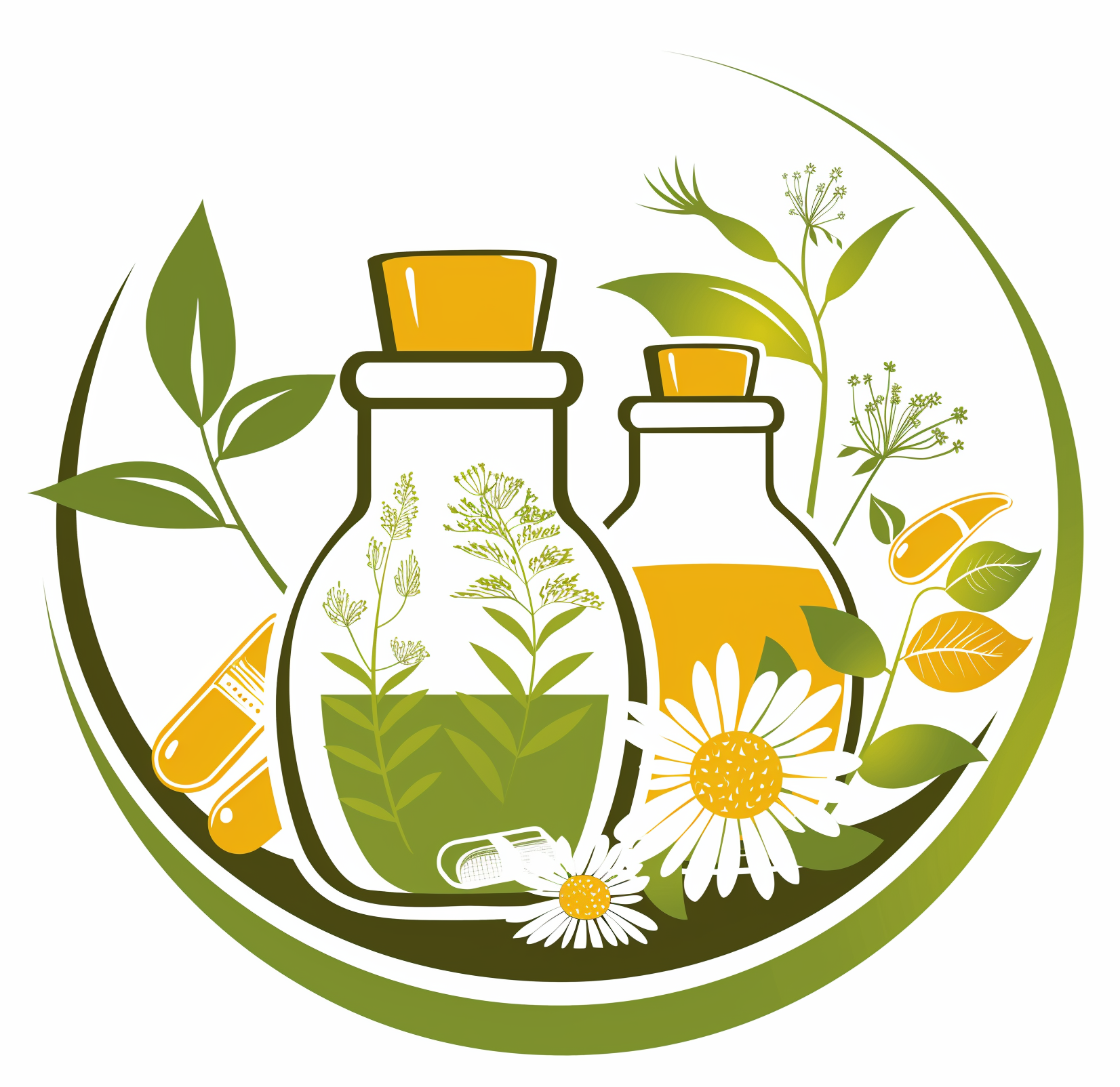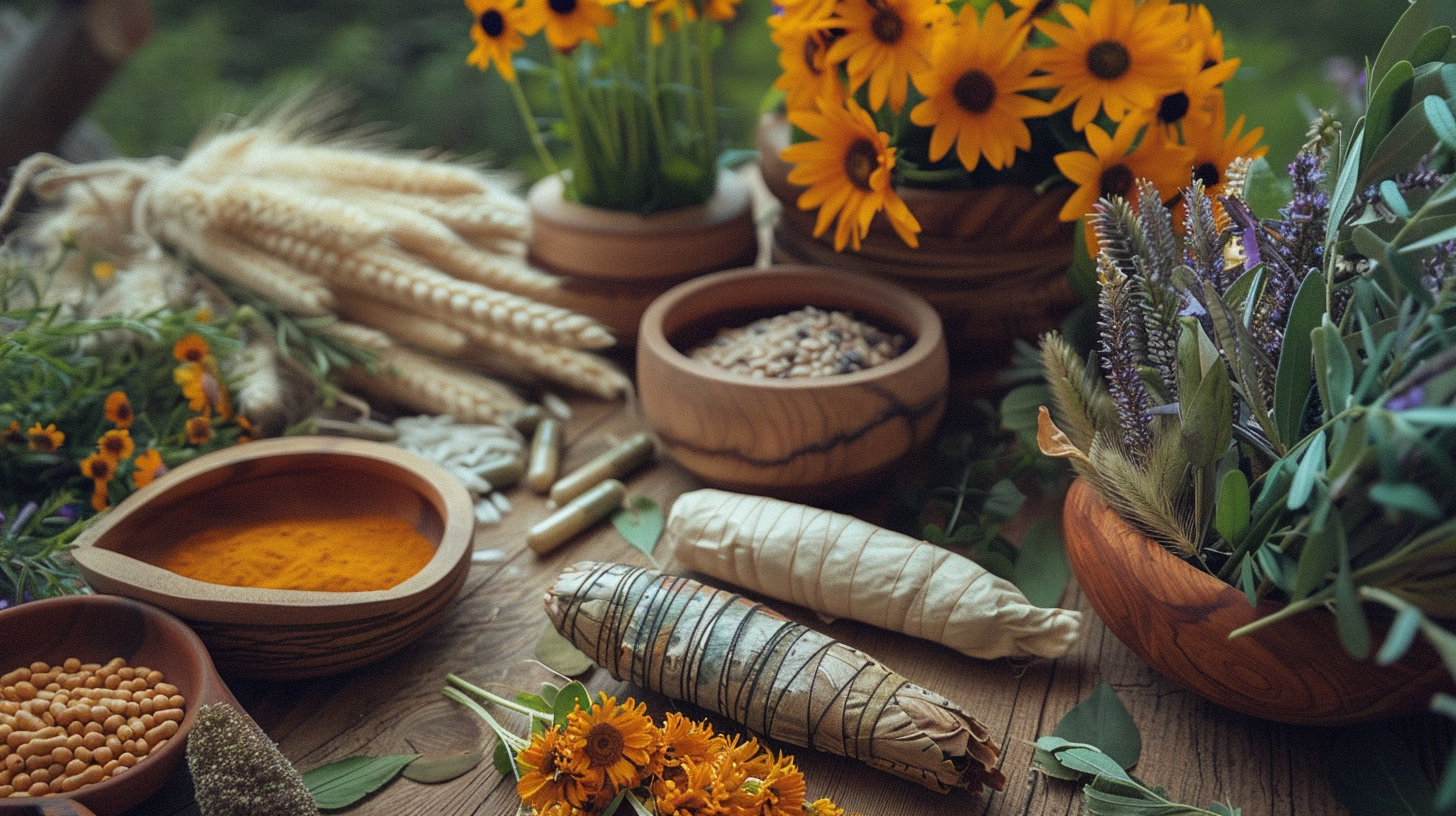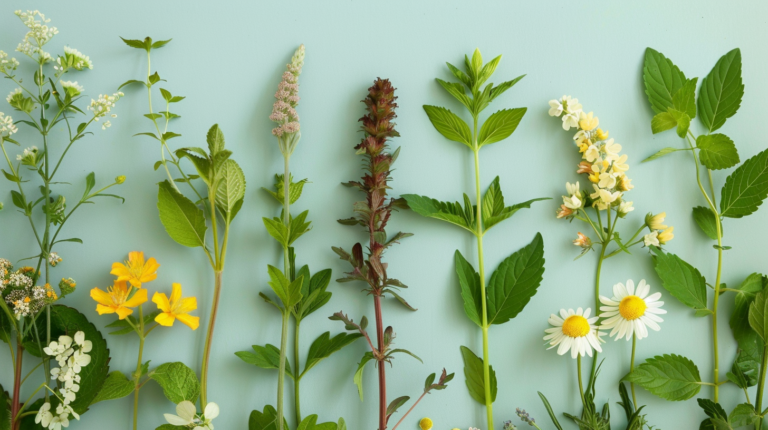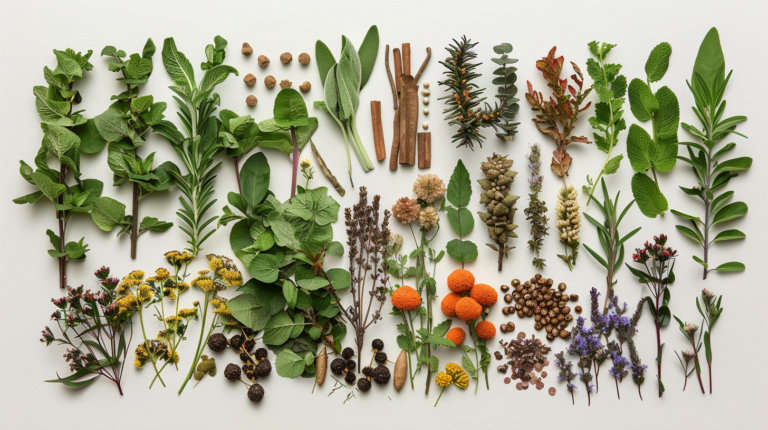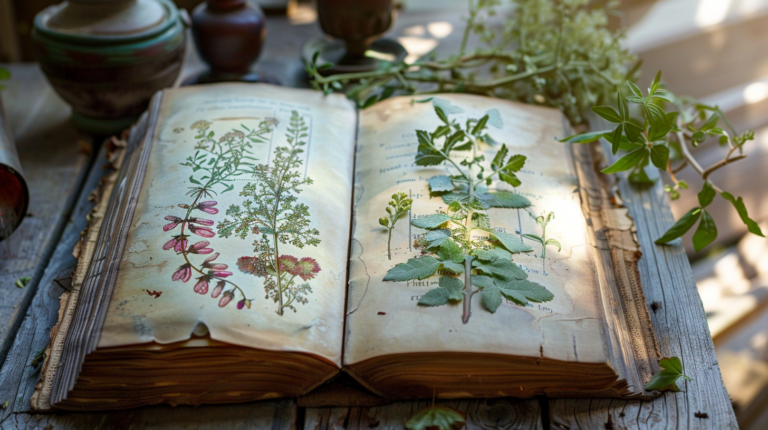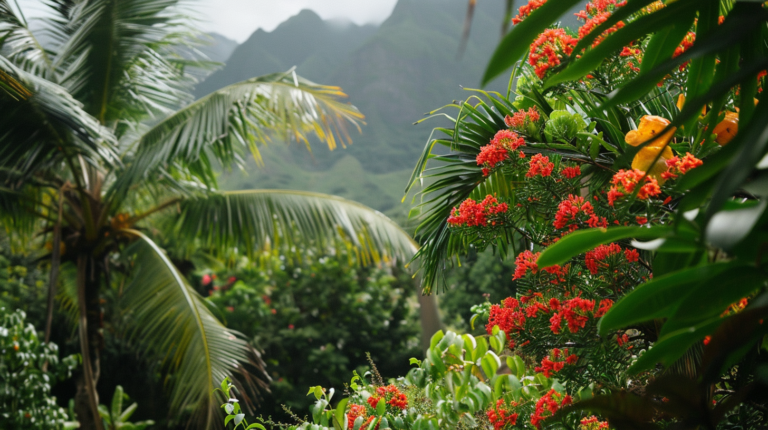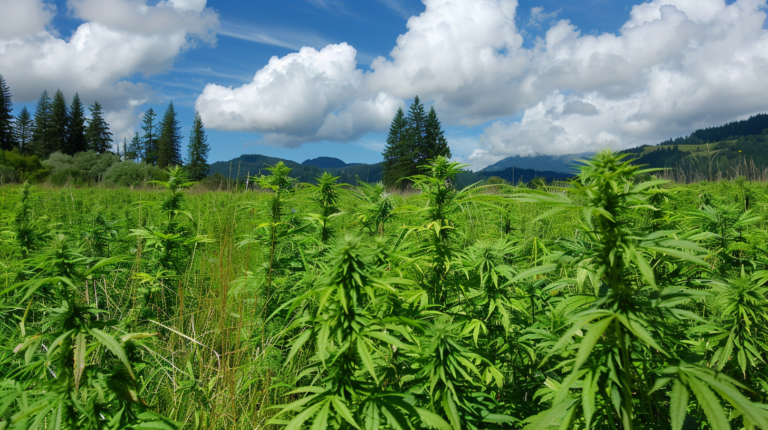How Native American Tribes Have Used Medicinal Plants?
Imagine you’re deep in the lush forests of North America, where every leaf and root holds a secret. The wisdom of the native tribes echoes through the trees, a legacy of knowledge passed down through generations.
Many of us don’t realize that modern ailments often have natural remedies that have been known for centuries. From the soothing properties of willow bark to the healing powers of Echinacea, the answer to our health problems may be closer than we think.
This new post: “How Native American tribes have used medicinal plants” provides insights into how these natural remedies, such as the root of certain plants, were utilized by Native Americans to treat a variety of ailments. By understanding these ancient practices, we can reconnect with the medicinal herbs that have stood the test of time and incorporate them into our own lives for better health and well-being.
The Historical Significance of Medicinal Plants in Native American Culture
Ancient Traditions and Practices
Oral Histories and Cultural Transmission
The Native American tribes possessed an incredibly rich tradition of using medicinal plants that spanned centuries. From a young age, children learned the specific uses of different plants through oral histories and stories passed down from generation to generation.
These native medicinal plants were not only the backbone of health but were also intrinsic to cultural transmission and preservation. It’s fascinating how specific details, like the way to prepare a poultice used for treating a wound, were meticulously recounted so they could be remembered accurately.
Shamans and healers played a pivotal role in this transmission, not just as healers, but as keepers of vast botanical knowledge. Oral traditions ensured that this precious knowledge of native plants remained intact over centuries, even as tribes moved or faced external pressures.
Rituals and Ceremonies
Plants were deeply woven into the fabric of Native American religious and spiritual life. Many medicinal herbs and plants found their places in rituals and ceremonies, which were believed to invoke blessings or cures. For example, burning sage in a smudging ceremony is a well-known practice that persists today. The cleansing smoke was, and still is, believed to purify and protect spaces and people.
Medicinal rituals often incorporated elements of prayer and songs, further embedding these plants within the cultural and spiritual practices. You can just imagine a Cherokee healer singing an ancient song while preparing a willow bark tea, believing that the melodies could enhance the plant’s used healing effects.
The Role of Shamans and Healers
Training and Knowledge Transfer
Becoming a shaman or healer was not a light undertaking. The training was rigorous, often beginning in childhood and spanning decades. Trainees had to memorize vast amounts of information about the parts of each plant, such as which leaves were utilized for specific ailments or how to extract essential oils. This was hands-on learning, involving internships where they would work directly under an experienced shaman.
A fascinating aspect of this training was the spiritual component. Many tribes believed that plants had spirits and that to harness their medicinal properties effectively, one had to communicate and form a relationship with these spirits. This meant spending time in nature, observing the plants in their natural habitats (often the vast forests of North America), and learning the subtle signs that indicated the plant was ready to be harvested or used.
Key Medicinal Plants Used by Native American Tribes
Echinacea (Coneflower)
Medicinal Uses
Echinacea, commonly known as coneflower, was widely used by tribes such as the Sioux and Plains tribes. This plant is renowned for its ability to boost the immune system and is still popular today for treating colds and infections.
Its root was the primary part of the plant used, often in the form of a tea or tincture. In modern terms, it has been found to have anti-inflammatory properties, making it a natural choice for treating wounds and infections.
Cultural Importance
Beyond its practical uses, Echinacea held a significant place in the social and medicinal life of these tribes. It was believed to have protective properties against evil spirits and was often used in seasonal rituals to ward off disease.
Willow Bark
Medicinal Properties
Willow bark is another standout with a history that stretches far and wide. The bark contains salicylic acid, the precursor to modern aspirin, which makes it an excellent pain reliever. Native Americans would chew on the bark or brew it into a tea to treat headaches, muscle pain, and fever.
Traditional Preparations
Preparation methods varied, but the most common way was to boil the bark to extract its medicinal properties. This tea was consumed or applied to wounds and swellings to alleviate pain. In some tribes, specific rituals surrounded the harvesting and preparation of willow bark to honor its healing spirit.
Sage
Healing Properties
Sage was considered a sacred plant for many tribes, revered for its powerful healing properties. It served as an antibacterial agent and was used to treat sore throats, digestive issues, and infections. Preparing sage involved either brewing it into a tea or burning it and using the smoke for medicinal purposes.
Ritual Uses
The cultural significance of sage can’t be overstated. It played a central role in purification rituals and was often burned during ceremonies to cleanse an area of negative energies. This practice continues today, evidencing the long-standing belief in sage’s spiritual and physical healing powers.
Yarrow
Health Benefits
Yarrow was widely used for its strong antiseptic and anti-inflammatory properties. Native American healers used yarrow to treat a variety of wounds and infections. The leaves, when crushed, form a poultice that could be applied to the skin. Modern studies have confirmed that yarrow contains several compounds that can help in wound healing, further validating its traditional use.
Preparation and Administration of Medicinal Plants
Teas and Infusions
Teas and infusions were among the simplest and most common methods for administering medicinal plants. It involved boiling water and letting the plant parts steep to extract their beneficial compounds. These teas could be made from various parts of the plant, including leaves, roots, and bark, and were often used to treat internal conditions such as stomach ache, fever, or respiratory infections.
Tinctures and Extracts
For more potent treatments, tinctures, and extracts were preferred. These involved soaking plant parts in alcohol or vinegar to draw out the active constituents. The resulting liquid was highly concentrated and required only small dosages to be effective. This method was particularly useful for plants like Echinacea and Willow Bark, which are known for their strong medicinal properties.
Salves and Poultices
Lastly, for skin conditions and wounds, salves and poultices were the go-to methods. These involved blending plant matter with a medium like animal fat or wax to create a topical application. Another technique was to mash the plant parts into a paste and apply it directly to the affected area, often followed by a wrap to hold it in place. This was commonly done with plants like yarrow and sage, which have excellent healing and antiseptic properties.
The Modern Relevance of Native American Medicinal Practices
Integration with Western Medicine
Native American medicinal practices have found a significant place in the realm of modern healthcare. Many herbs and plants traditionally used by these cultures are now extensively studied and utilized alongside Western medicine. For instance, willow bark, the source of salicylic acid, is the natural precursor to aspirin, a staple in modern pain relief.
This cross-pollination of knowledge not only enriches medical practice but also helps to validate and conserve traditional wisdom. Hospitals and wellness centers are more likely than ever to include herbal treatments as part of a holistic approach to healing. The journey of Echinacea from a Native American remedy to a common cold and flu treatment in households worldwide is a testament to this integration.
Conservation and Ethical Harvesting
As the popularity of these medicinal plants grows, so does the responsibility to harvest them ethically. Overharvesting can threaten their natural populations, many of which are already endangered due to habitat loss. Organizations like the United Plant Savers are actively working to protect these native medicinal plants.
To ethically utilize these resources, it’s crucial to follow sustainable practices:
- Harvest plants in small amounts and only when they are abundant.
- Ensure that the root systems remain largely intact to allow for regrowth.
- Consider cultivation in home gardens instead of wild foraging.
Additionally, many tribes have cultural protocols and permissions that should be respected, as these plants are integral to their cultural heritage.
Continued Cultural Significance
For Native American tribes, the use of medicinal plants is not merely a practice in healing but a profound cultural tradition. These plants are revered, and their gathering and preparation often involve rituals that are vital to the community’s spiritual life.
For example, the smudging of sage is a practice that extends far beyond its medicinal properties, serving as a means to cleanse and protect spiritually. Even today, these traditions persist, providing a sense of identity and continuity for Native American communities.
Learning from Native American Wisdom
Resources for Further Study
If you’re interested in diving deeper into Native American herbalism, several key resources can guide you:
- Native American Medicinal Plants: An Ethnobotanical Dictionary by Daniel E. Moerman
- Braiding Sweetgrass: Indigenous Wisdom, Scientific Knowledge, and the Teachings of Plants by Robin Wall Kimmerer
- The United Plant Savers’ website, which provides information on conservation and sustainable practices
These texts and organizations can offer valuable insights into the profound world of Native American medicinal knowledge.
The Importance of Cultural Respect and Appropriation
While exploring and incorporating Native American herbal practices, it’s paramount to approach with respect and awareness of cultural appropriation. These native medicinal practices are part of a living culture’s heritage and identity. Misuse or oversimplification can lead to the erosion of these rich traditions.
When borrowing from these traditions, consider:
- Giving credit to the Native American tribes that discovered and maintained this knowledge.
- Supporting Native American authors and businesses that offer these products.
- Engaging with these communities, when possible, to learn directly and contribute to their ongoing preservation efforts.
Understanding and honoring the context from which these medicinal plants and practices arise ensures that their legacy endures authentically and respectfully.
